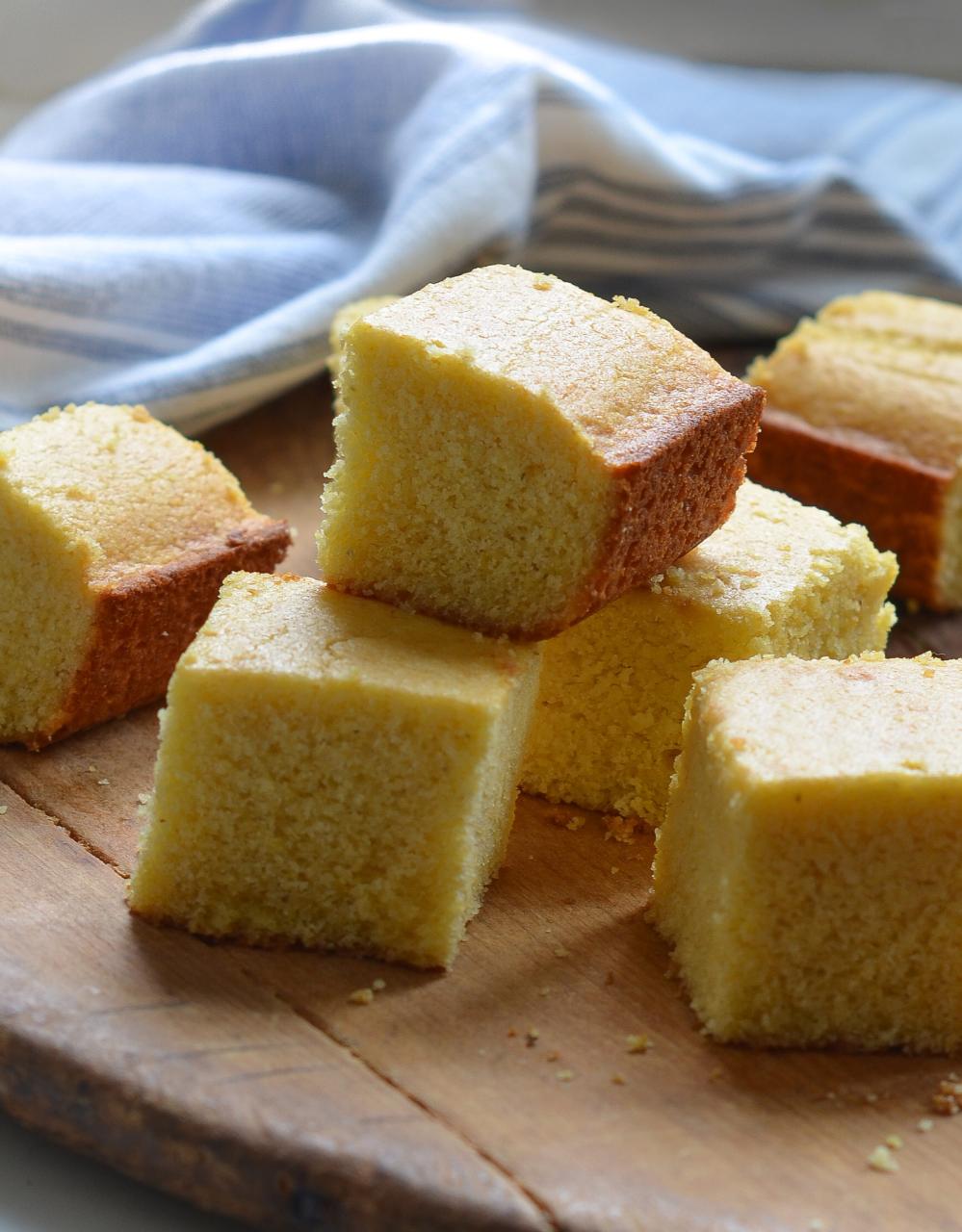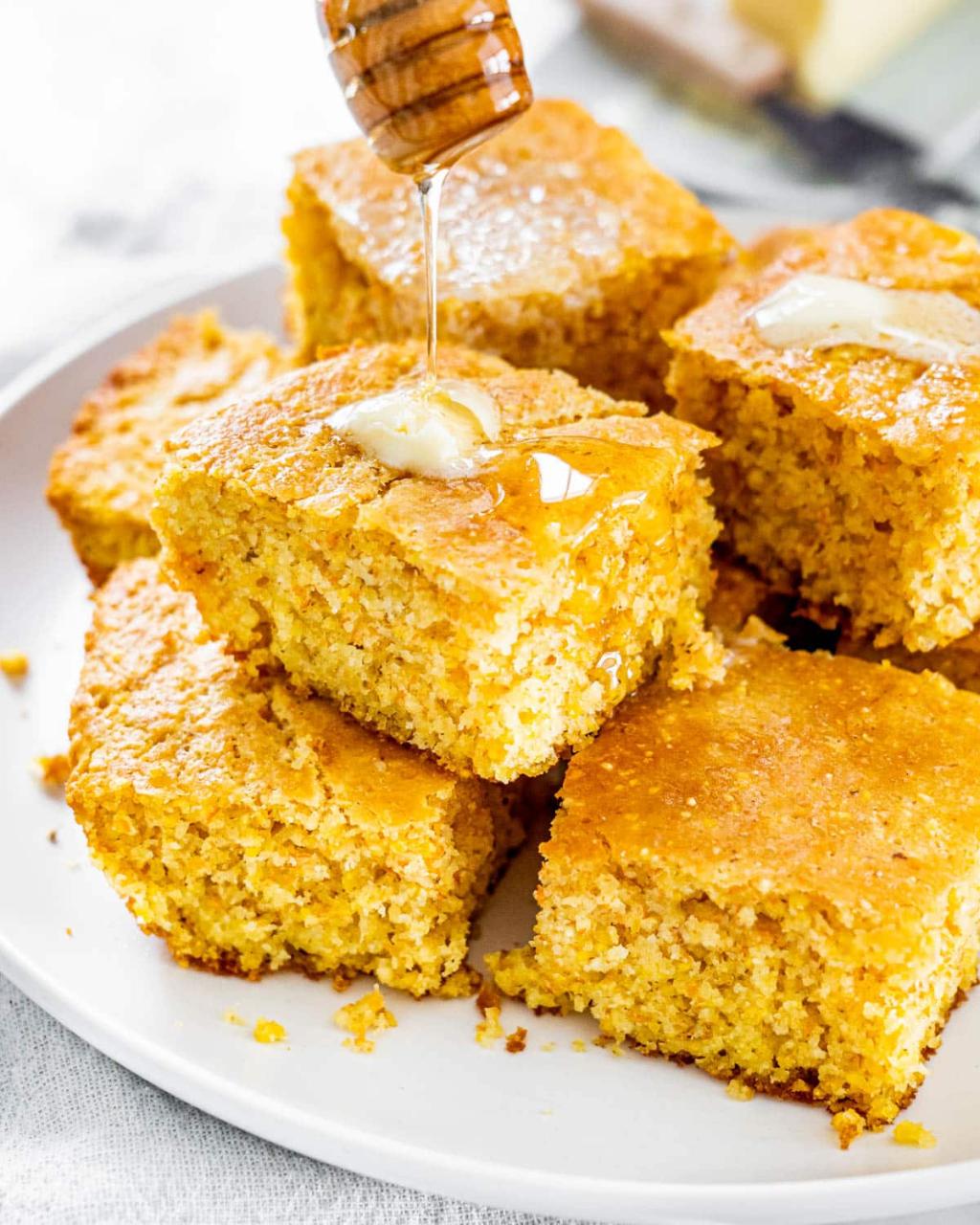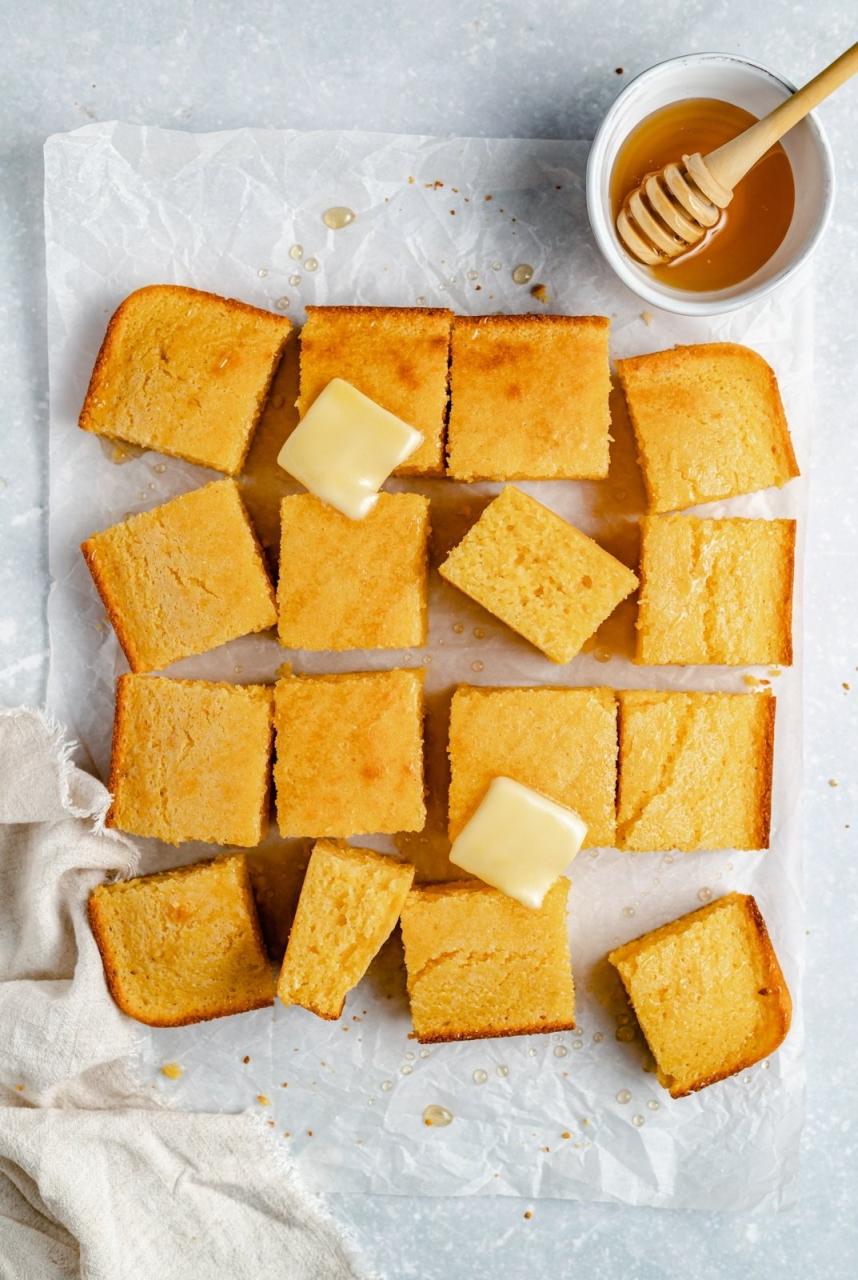The aroma of freshly baked cornbread, with its golden crust and tender crumb, has a way of making any house feel like a home. There’s a comforting steadiness in its simplicity—a blend of cornmeal, flour, milk, and eggs coming together to create something that’s both rustic and heartening. On days when the air is crisp and the leaves outside are turning to shades of amber and gold, I’m drawn to the kitchen with a yearning for this wholesome staple.
Corn bread is a bridge between meals and memories, a versatile companion to a steaming bowl of chili or a tender bite to balance the kick of a spicy barbecue. It’s the kind of recipe that invites personalization—some may stir in jalapeños for heat, others might sweeten the batter with honey, but always, it remains unmistakably cornbread.
Baking this bread is an act of tradition, whether it’s done in a cast-iron skillet that’s been seasoned by years of use or in a modern bakeware that’s just beginning its journey in your kitchen. The reasons for making cornbread are as varied as its recipes: to accompany a family dinner, to share at a community potluck, or simply to enjoy the pleasure of baking from scratch.
As the batter spreads into the corners of the pan and the first bubbles appear on the surface, there’s a sense of eager anticipation. Cornbread doesn’t just feed the body; it nourishes the soul with its down-to-earth goodness and the shared joy of a meal made with love.
Corn Bread Recipe

Cornbread is a classic comfort food with deep roots in American culinary tradition, particularly in the Southern United States. It’s a quick bread made primarily from cornmeal, which gives it a distinctive texture and flavor that can range from savory to sweet. The basic ingredients for cornbread typically include cornmeal, flour, baking powder, salt, milk, eggs, and some form of fat like butter or oil. Sugar may be added depending on regional and personal taste preferences.
The versatility of cornbread allows for numerous variations and adaptations. Some recipes incorporate additional elements such as cheese, jalapeños, or fresh corn kernels to enhance the flavor and texture. Cornbread can be baked in a preheated oven, traditionally in a cast-iron skillet which imparts a characteristic crispy crust, but it can also be made in other types of pans or even in an air fryer.
Cornbread serves as a staple accompaniment to a variety of dishes, including chili, barbecue, and stews. It can be enjoyed warm with butter and honey, or used as a base for stuffing. Its cultural significance is celebrated through family recipes passed down through generations, each with its own story and place at the table. Whether served at a casual family dinner or as part of a festive holiday spread, cornbread remains a beloved dish that embodies the spirit of home-cooked meals and shared comfort.

Corn Bread
Equipment
- 1 oven
Ingredients
- 17 ounces of corn kernels corn frozen
- 2 white onions cut julienne style.
- 7 ounces of cheese
- 5 eggs
- ½ cup milk
- ¼ cup butter
- 1 teaspoon salt
- 1 teaspoon baking powder baking powder
Instructions
- Preheat oven to 350 F
- GRIND previously thawed corn kernels in food processor
- SAUTÉ onions in butter over medium heat until they are translucent
- ADD milk and cook over low heat for 10 minutes, remove from heat and let cool
- BEAT eggs
- ADD the cheese along with the baking powder and salt.
- ADD the corn, milk with the onion mixture.
- MIX the ingredients well until they are smooth and creamy
- GREASE a 9 × 9 inches pan
- POUR the mixture into the mold.
- BAKE in preheated oven for 45 minutes.
- BROIL for the last 3 minutes.
- REMOVE and serve.
- Tips for cooking Corn Bread
- The beauty of this Corn Bread is that you can also eat hot or cold, as you prefer.
- How to serve and accompany Corn Bread?
- If you want this corn bread to be spongy you have to serve it right away. But if you don’t it is still good and delicious the next day!
Video
How to make Corn Bread using air fryer

Baking cornbread in an air fryer feels like a delightful innovation, a blend of tradition with modern convenience. The thought of achieving that classic, comforting taste without heating up the entire kitchen is truly appealing. As I mix the batter, rich with cornmeal and a hint of sweetness, there’s a sense of eager anticipation.
Pouring the mixture into an air fryer-safe pan, I’m curious to see how this method will honor the cornbread’s heritage. The air fryer circulates heat efficiently, promising a quick bake and a desirable crispness to the edges. In mere minutes, a golden, inviting bread emerges, its texture light and crumbly, ready to be paired with a swipe of butter or a drizzle of honey.
This approach to cornbread is a nod to the past with an embrace of the present, offering a simple joy and a testament to the versatility of beloved recipes.
Tips for making Corn Bread

Cooking Tips
Cornbread, with its golden hue and rustic charm, is a dance of simplicity and soul. As I stir the batter, there’s a comforting rhythm to the process, a connection to the generations that have savored this staple. The key lies in the cornmeal—its quality sets the stage for flavor and texture.
I recommend a hot skillet for baking; it creates a beautifully crisp crust that sings against the tender crumb. Balance the sweetness to your taste, and consider a touch of honey for a warm, floral note. Each slice, steaming and soft, feels like an embrace, a reminder of shared tables and hearty laughter.
Serving suggestions

Serving cornbread is an act of sharing comfort, a gesture that turns a simple meal into a feast for the senses. I take pleasure in slicing the warm bread, its crust crackling softly under the knife, revealing the steamy, tender interior. A pat of butter melting on top adds a rich, velvety layer, inviting the first bite.
To complement its down-home charm, I like to pair cornbread with a drizzle of honey or maple syrup, which enhances its innate sweetness. For those who favor the savory side, a sprinkle of sharp cheddar cheese or a spoonful of jalapeño-infused honey can add a delightful twist.
Cornbread isn’t just a side dish; it’s a bridge to memories of family dinners and laughter around the table. It’s best served alongside soups and stews, where it can soak up flavors, or as a companion to a salad, adding a satisfying crunch. Each serving is an invitation to enjoy the simple pleasures, a warm welcome to any plate.
Top 5 FAQs about Corn Bread
- What are the main ingredients in traditional corn bread? Traditional cornbread typically includes cornmeal as the primary ingredient, along with flour, baking powder, salt, sugar (though this can vary depending on regional preferences), milk, eggs, and some type of fat like butter, bacon grease, or oil. Some recipes may also include additional ingredients such as cheese, jalapeños, or corn kernels to add flavor and texture.
- How do sweet and savory corn bread differ? The main difference between sweet and savory corn bread lies in the sugar content. Sweet cornbread includes a higher amount of sugar, honey, or another sweetener, giving it a cake-like quality and a dessert-like flavor profile. Savory cornbread contains less to no sugar, emphasizing the natural flavors of the cornmeal and any added savory ingredients like cheese or herbs.
- Is cornbread gluten-free? Traditional corn bread recipes often call for both cornmeal and wheat flour, making them not gluten-free. However, it is possible to make gluten-free cornbread by using gluten-free all-purpose flour or by only using cornmeal. People who are sensitive to gluten should look for recipes or pre-made cornbread mixes that are specifically labeled as gluten-free.
- Can cornbread be made vegan? Yes, cornbread can be adapted to fit a vegan diet by substituting plant-based ingredients for the animal products commonly used. For example, dairy milk can be replaced with almond, soy, or oat milk; eggs can be substituted with flax eggs or commercial egg replacers; and instead of butter, one could use vegetable oil or a vegan butter alternative.
- What are some common ways to serve corn bread? Corn bread can be served in a variety of ways depending on personal preference and the meal it accompanies. It can be enjoyed warm or at room temperature, with butter, drizzled with honey, or used as a side dish to complement soups, stews, chili, and barbecue dishes. It’s also popular during holidays, especially Thanksgiving, where it might be used as a base for stuffing. Crumbled cornbread can also serve as a topping for casseroles or salads for added texture.
As the last slice of Corn Bread is tenderly enjoyed, there’s a comforting sense of completion that fills the room. This bread, with its golden crust and soft, crumbly interior, is a humble yet profound staple that speaks to the heart of home cooking. It’s a versatile canvas that has been painted with the flavors and traditions of countless family tables.
The satisfaction derived from baking Corn Bread is found in its straightforwardness and the shared joy it brings to those who partake. Each piece, whether savored plain or adorned with butter and honey, is a bite of nostalgia, a connection to the earthy, robust essence of corn. The act of baking it is a ritual that honors the simplicity of its ingredients and the history of its origins.
In conclusion, Corn Bread is not merely a side dish; it’s a symbol of gathering, a comfort food that transcends regional boundaries, and a testament to the enduring appeal of rustic fare. It’s a reminder that some of the most cherished culinary experiences are rooted in the basics, offering warmth, sustenance, and a taste of shared heritage with every slice.